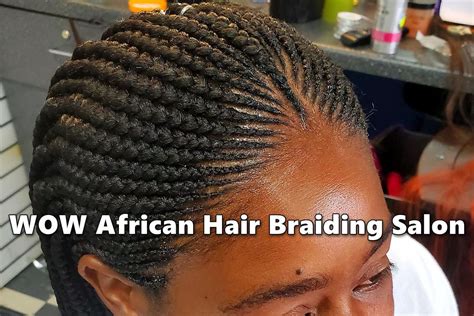Kinky braiding hair is a versatile type of synthetic fiber used to create intricate and stylish braids and protective hairstyles. Made from high-quality materials, it mimics the natural texture and appearance of kinky hair, offering a wide range of options for those seeking a chic and protective style.

- Protective: Braids created with kinky braiding hair protect natural hair from damage caused by heat, chemicals, and environmental factors.
- Versatile: Kinky braiding hair is available in a variety of textures, lengths, and colors, allowing for countless styling options.
- Long-Lasting: Braids made with kinky braiding hair can last for weeks or even months, providing a low-maintenance, long-lasting hairstyle.
- Affordable: Compared to other hair extension options, kinky braiding hair is relatively affordable, making it accessible for many.
- Kanekalon: A lightweight, affordable synthetic fiber known for its natural-looking texture.
- Toyokalon: A premium synthetic fiber that offers a more vibrant and long-lasting appearance.
- Human Hair: Natural hair that provides the most realistic look but requires more maintenance than synthetic fibers.
To select the right kinky braiding hair, consider the following factors:
- Texture: Choose a texture that matches your natural hair or desired style.
- Length: Determine the length of braids you want to create.
- Color: Select a color that complements your skin tone and personal preferences.
- Quality: Opt for high-quality hair that is less prone to tangling and breakage.
- Prepare your hair: Wash and condition your natural hair to remove any dirt or oils.
- Section your hair: Divide your hair into small sections for easier braiding.
- Attach the braiding hair: Attach a small amount of braiding hair to the root of each section using a knot or glue.
- Braid: Braid the hair using your desired technique, such as cornrows, box braids, or Senegalese twists.
- Secure the braids: Finish the braids by securing them with an elastic band or thread.
- Wash: Wash your braids regularly using a gentle shampoo and conditioner designed for braided hair.
- Moisturize: Apply a leave-in conditioner or hair oil to keep your braids hydrated and prevent dryness.
- Protect from heat: Avoid using heat styling tools, such as blow dryers or flat irons, as they can damage the hair.
- Retwist: Retwist the braids regularly to maintain their shape and prevent frizziness.
- Over 50% of women who wear braids use kinky braiding hair.
- The global braiding hair market is expected to reach $1.4 billion by 2027.
- Kinky braiding hair is the most popular type of braiding hair used in the United States.
- Heat-Resistant Kinky Hair: Heat-resistant kinky hair is designed to withstand high temperatures, reducing the risk of damage from heat styling.
- Pre-Stretched Kinky Hair: Pre-stretched kinky hair has been pre-extended, making it easier to braid and reducing installation time.
- Water-Friendly Kinky Hair: Water-friendly kinky hair is treated to be waterproof, allowing for swimming and other water activities without damage.
| Type of Kinky Braiding Hair | Characteristics |
|---|---|
| Kanekalon | Lightweight, affordable, natural-looking |
| Toyokalon | Premium, vibrant, long-lasting |
| Human Hair | Realistic, requires more maintenance |
| Pre-Stretched Kinky Hair | Easier to braid, reduces installation time |
| Braid Size | Description |
|---|---|
| Micro Braids | Very small, intricate braids |
| Cornrows | Medium-sized braids that lie flat against the scalp |
| Box Braids | Large, square-shaped braids |
| Senegalese Twists | Spiral-shaped braids that resemble rope |
| Braiding Techniques | Difficulty Level |
|---|---|
| Cornrows | Beginner |
| Box Braids | Intermediate |
| Senegalese Twists | Advanced |
| Micro Braids | Expert |
| Benefits of Kinky Braiding Hair | Pain Points |
|---|---|
| Protective: Protects natural hair from damage | Breakage: Can tangle and break if not properly cared for |
| Versatile: Wide range of styling options | Time-Consuming: Braiding can take hours |
| Long-Lasting: Can last for weeks or months | Maintenance: Requires regular washing and moisturizing |
| Affordable: Compared to other hair extensions | Synthetic Feel: May not look as natural as human hair |
Q: How long does it take to braid kinky braiding hair?
A: Braiding time varies depending on the type of braid and the length of the hair, but it can take anywhere from a few hours to a full day.
Q: Can I swim with kinky braiding hair?
A: It depends on the type of kinky braiding hair. Water-friendly kinky hair is designed to withstand water, but other types may absorb water and become heavy.
Q: How often should I wash kinky braiding hair?
A: Wash your braids every 2-3 weeks to keep them clean and hydrated.
Q: Can I sleep with kinky braiding hair?
A: Yes, but it’s important to protect your braids by covering them with a bonnet or scarf.
Q: Can I use heat styling tools on kinky braiding hair?
A: Avoid using heat styling tools on synthetic kinky braiding hair as it can damage the fibers. If you use heat on human hair braiding hair, use low heat settings and a heat protectant spray.
Q: Is kinky braiding hair heavy?
A: The weight of kinky braiding hair varies depending on the type and length. Some types can be lightweight, while others may be heavy.
Q: How long does kinky braiding hair last?
A: Braids made with kinky braiding hair can last for weeks or even months, depending on the type of hair, maintenance routine, and sleeping habits.
